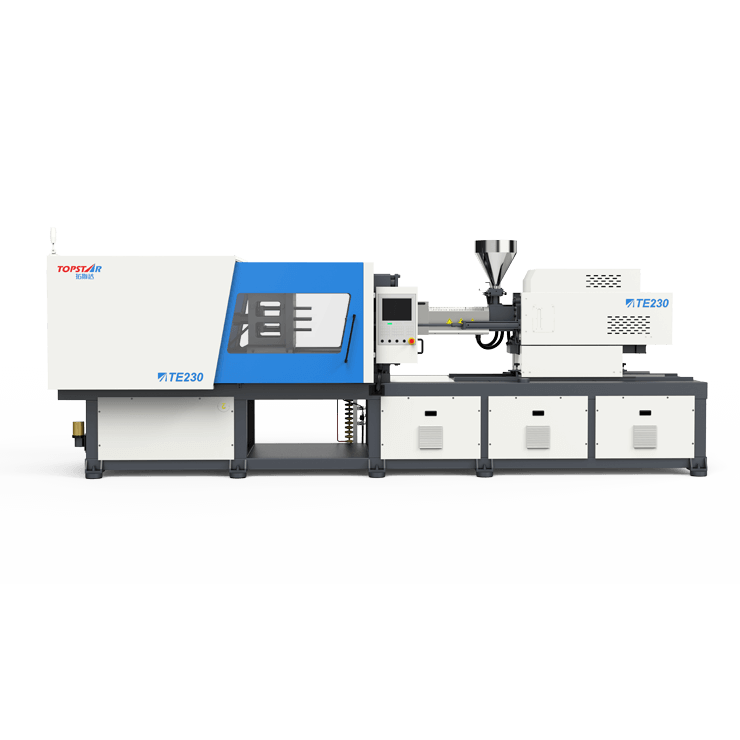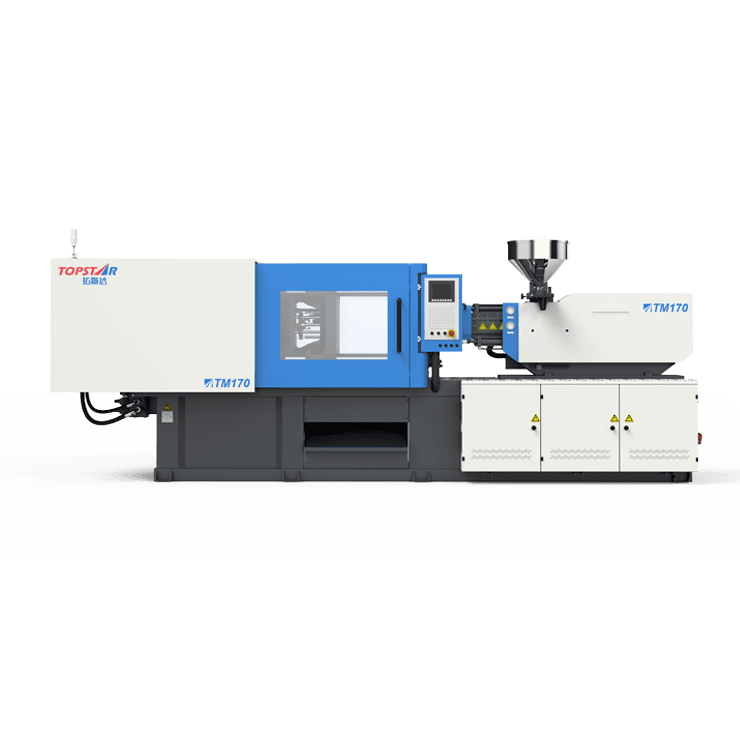Want to know the ultimate guide on what a hopper dryer is?
2022/05/11 By 兰兹

Concept and general information
Hopper dryers are installed and are usually located above the equipment’s loading opening. It is designed to dry polymeric raw materials. Such drying is generally standard for polymers of low hygroscopicity.
It is to reduce the number of problems with the possible moisture content of raw materials during processing and improve the quality of finished plastic products.

Polymeric materials having a low hygroscopic index do not require drying. In particular, this applies to the most common polyolefin – polyethylene and polypropylene.
However, for one reason or another, for example, if raw materials are not stored correctly in the warehouses of raw material sellers, the material may still contain moisture in sufficiently large quantities.
In these cases, the polymer needs to dry and heat for a short time before loading into the material cylinder of the equipment. It increases the productivity of processing processes, such as injection molding or extrusion.
For this purpose, hopper dryers are standard in the modern plastics processing industry.
The design and principle of operation of hopper dryers
In the standard method of a modern hopper dryer, hot air passes through the polymer material in the hopper from bottom to top. Relatively dry air lowers the moisture content of the plastic and exits the drying zone, mixing with the surrounding air.
In the most advanced polymer dryers, it is common for materials that require the best drying. Such as polyethylene terephthalate (PET, PET), air circulates in the system, and the dryer comes with a moisture absorption unit.
This unit allows you to radically reduce the humidity of the air with the help of special absorbers and direct it to the drying area for the most effective dehumidification.
Hopper dryers functions
The dried material is taken from the bottom zone of the hopper dryers. In this case, in parallel, undried raw materials enter the upper area of the bunker with the help of a vacuum loader. This leads to a countercurrent of heated air and wet polymer moving from top to bottom. It has a positive effect on the quality of dehumidification.
It should be noted that with all the advantages of the above-described hot air drying, we are talking primarily about the relative simplicity and cheapness of the standard equipment. This process is the most inefficient among those familiar.
The Process of Drying of Hopper Dryers
The heated air leaving the hopper dryers is not recommended. It must enter the same room where the air is taken from for drying, thus increasing the humidity of the source air.
In addition, the exhaust air is quite hot, which consumes additional electricity and increases the workshop’s temperature. It is usually not required. All these factors lead to relatively high costs for the drying process.
More technically advanced and efficient is a dryer that runs on hot and compressed air. The essence of the process is that the more air compresses, the less water it can contain. Thus, compressed air is, by definition, relatively drier without much additional preparation, such as dehumidification.
The drying process of the polymer material
The polymer material’s drying process consists of moisture absorption by expanding hot air. With increased gas volume, water from the polymer raw material partially, but in a more significant book than with hot air drying technology, passes into the former compressed air.
In this case, the humidified air leaving the hopper dryer is usually also thrown into the workshop Without any purification or dehumidification. In specific models of bunker-dryers with hot compressed air, its zoned supply, coupled with polymer heating, provides.
How do hopper dryers work?
In general, hot compressed air and compressed air absorb moisture from polymeric materials more effectively than air at atmospheric pressure. In recent years, leading peripheral equipment manufacturers dryers have begun to use this fact to offer new solutions for drying polymer raw materials.
Generally, developing hopper dryers with a working agent in the form of sharply cooling compressed air is of interest. It also successfully shows itself instead of a hot analog.
Due to their high cost and technical complexity, vacuum hopper drying systems have somewhat faded into the shadows. They are designed to remove water from plastics as deep as possible.
The essence of the operation of such a dryer for polymers comes from the physical fact that it is at low pressure. For example, at 0.4 bar, the boiling point of water drops to about 45 degrees C.
Application of hopper dryers
Polymer hopper dryers are suitable for removing surface moisture from plastic pellets. These devices have several significant advantages:

- Low price,
- A wide range of manufacturers around the world,
- Durability,
Ease of operation and maintenance
The vast majority of hopper dryers are familiar with plastic injection molding. A much smaller amount is typical for various types of blow molding and other plastic processing methods. Due to its high productivity, dryers for polymers with a large hopper volume are standard for extrusion.
The bunker-dryer mounts directly on the injection molding machine or extruder and is designed for drying wet polymer raw materials with hot air.
The polymer hopper drying, into which the original wet material enters before being sent to the injection molding machine, during the drying process quickly removes excess moisture from it with a stream of hot air.
Advantages of our drying bins
- Stainless steel working parts
- Demountable design
- Easy cleaning
- Temperature control system, with automatic power off of heating elements
- Possibility of installing a magnetic catcher
Why Drying bins is significant during production?
The drying bin is an essential piece of equipment for producing plastic products. The moisture content of the polymer granule negatively affects the quality of finish products and leads to a high level of defects:
Hopper dryers Surface defects are easy to observe on finished products, and tiny voids appear inside them during casting; the color changes, and the product’s mechanical properties deteriorate.
Thus, the moisture in the recycled polymer granulates causes many problems if the raw material is not correctly prepared before casting.
This can be both residual moisture after polymer processing and humidity that hygroscopic polymers absorb during storage or transportation. As a result, products’ appearance and technical characteristics, strength, and durability suffer.
TRENDING POSTS
HOT TOPIC
- Air Chillers
- AP-RubberPlas
- Automation changed engineering
- automation of injection molding robots
- Bench Injection Molding Machine
- Cabinet dryer manufacturers
- Cabinet dryers
- CNC Drilling Machine
- CNC Drilling Machines
- cnc engraving machine manufacturer
- cnc laser cutting machine manufacturer
- CNC Machine for Sale
- CNC Machine Manufacturing
- CNC Machine Tool
- CNC machine tool product
- CNC Machining Center
- CNC wood carving machine
- Cooling system
- Cross-Walking Single Axis Servo Cylinder Robot
- Cross-Walking Single-Axis Servo Cylinder Robot
- Cross-Walking Three-Axis/Five-Axis Servo Driven Robot
- cross-walking three-axis/five-axis servo-driven robot
- Dehumidifier Dryer
- delta parallel robot
- Desktop Injection Molding Machine
- Desktop injection molding machines
- Desktop Molding Machine
- Desktop Plastic Injection Molding Machine
- direct clamp injection molding machine
- Direct clamp injection molding machines
- Dosing & mixing system
- Drilling Centers
- Drying and dehumidification system
- drying and dehumidifying equipment
- Drying and Dehumidifying System
- drying system
- effective and efficient. Cabinet dryers are also used in other industries where large quantities of material need to be dried
- elbow hydraulic injection molding machines
- Feeding And Conveying System
- Five Axis Machine Center
- GMU-600 5-Axis Machining Center
- Granulating & Recycling System
- Honeycomb rotor dehumidifier
- horizontal injection molding machine
- Horizontal Injection Molding Machines
- Horizontal Injection Moulding Machine
- Horizontal Mixer manufacturer
- How The CNC Machine Works
- Industrial robot
- industrial robot parts
- industrial robot supplier
- Industrial robots
- Industry Chain
- Injection Manipulator
- Injection molding
- Injection molding automation
- Injection Molding Automation Solution
- Injection molding machine
- Injection Molding Machine Factory
- Injection Molding Machine Manufacture
- Injection molding machine procurement
- injection molding machine with a robot
- Injection molding machines
- injection molding plant
- Injection molding robot automation
- Injection Moulding Robots
- Injection Robot
- Injection robot arm
- Introducing Injection Robot
- It is the best choice for drying large quantities of material at once. Cabinetmakers use these machines because they are fast
- large injection molding machine
- Learn what industrial automation and robotics is
- low speed sound-proof granulator
- machine plastic molding
- make sure to add some! Improvements (2) Keyphrase in introduction: Your keyphrase or its synonyms appear in the first paragraph of the copy
- manufacturing
- micro injection molding machine
- middle speed granulator
- Mini CNC machine manufacturers.
- Mold Temperature Control System
- molding material Dehumidifying System
- New electric injection molding machine
- nitrogen dryer manufacturer
- nitrogen dryer system manufacturer
- Oil type mold temperature controller
- Outbound links: No outbound links appear in this page. Add some! Images: No images appear on this page. Add some! Internal links: No internal links appear in this page
- plastic forming equipment
- plastic injection machine
- plastic injection molding
- Plastic injection molding machine
- Plastic Injection Molding Machines
- plastic injection robot
- plastic molding press
- plastic-molding machine
- powerful granulator
- Powerful Type Sound-Proof Granulator
- production of plastic seats
- robot injection molding machine
- robot manufacturing companies
- Robotic arm for injection molding machine
- robotic injection molding machines
- robotics in injection molding
- SCARA robot
- Service-oriented manufacturing
- Servo Cylinder Robot
- servo driven robot
- Servo Driven Robots
- servo injection robots
- Servo-Driven Robot
- Setup of injection machine
- Silicone Injection Molding Machine
- six-axis industrial robot
- Stainless Hopper Dryer
- swing arm robot
- toggle clamp injection molding machine
- Topstar
- Topstar Engineering
- Topstar injection molding intelligent
- Topstar Scara Robots
- Useful Injection molding machine
- Vertical machining centers
- volumetric type blender
- water distributor
- x carve CNC
